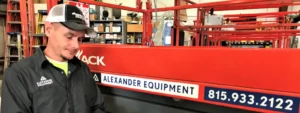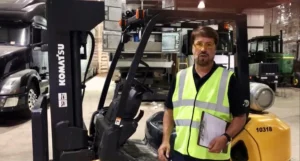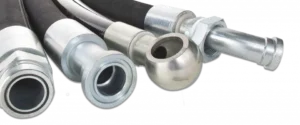All Self-Propelled MEWPs Will Tip Over if Elevated on a Slope that Exceeds the Manufacturer’s Recommendations
A MEWP is intended to be elevated only on a firm level surface, unless it is equipped with outriggers that are designed for use on sloped surfaces.
Determine the Maximum Slope Rating for the Machine
How do you find out the maximum slope rating for the machine you are required to operate?
The answer to this question and virtually every other question you have about safely operating a MEWP can be found in the make and model specific operator’s manual located in the weatherproof compartment in the platform, on the machine.
After finding the maximum slope rating for your machine in your operator’s manual, you’ll need to calculate the slope angle in your work area.
How to determine the slope angle in your work area
There are two common methods to determine the angle of the slope to be driven on
- The first method is by using a digital inclinometer. This is an app that can be easily downloaded free or for a minimal charge on iPhone or Android. Simply open the app, place your phone on the slope and it will automatically calculate the slope angle in degrees.
- The second method is to manually measure the slope. This method involves finding the rise and run of the slope. You will need:
- A carpenter’s level
- A straight piece of wood at least 3 feet / 1 meter long
- A tape measure
Lay the piece of wood on the slope. At the downhill end, lay the level on the top edge of the piece of wood and lift the end until the piece of wood is level. While holding the piece of wood level, measure the vertical distance from the bottom of the piece of wood to the ground. Divide the tape measure distance (rise) by the length of the piece of wood (run) and multiply by 100.
Example:
Piece of wood / Run = 144 inches, Rise = 12 inches -> 12 in ÷ 144 in = 0.083 x 100 = 8.3% grade
If you don’t want to do the math, you can use this free grade calculator to do it for you.
Once you determine the slope angle to be driven on, compare it with your MEWP’s gradeability rating found in the operator’s manual.
If the slope angle is greater than the machine’s rating, it is unsafe, do not drive the lift on the slope!
There are other options if the slope exceeds the machine’s rating, such as choosing a MEWP equipped with outriggers or utilizing a MEWP with greater horizontal outreach. Be sure to take the time to select the right machine for the job.
Most modern self-propelled aerial lifts are equipped with a tilt alarm that will alert the operator when operating on a slope that exceeds the manufacturers published maximum slope rating.
Note: Slope rating is subject to ground conditions and adequate traction.
Important rules when operating a MEWP on a sloped surface
If the tilt alarm sounds when the platform is raised, use extreme caution!
If you are operating a scissor lift, lower the platform and move the machine to a firm, level surface.
If on a boom, identify the condition of the boom on the slope and follow these steps to lower the boom before moving to a firm, level surface:
Do not rotate the boom while lowering
- If the tilt alarm sounds with the platform uphill, first lower the boom, then retract the boom.
- If the tilt alarm sounds with the platform downhill, first retract the boom, then lower the boom.
This article is not meant to take the place of a comprehensive aerial lift operator training program. Contact Alexander Equipment today to schedule your teams MEWP Operator Training.



